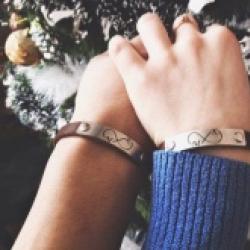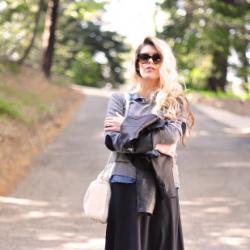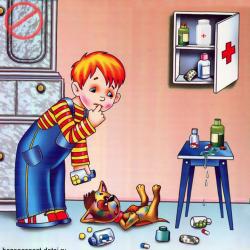Notes on a journey into the vacuum cleaner's past. Summary of educational activities for the formation of a holistic picture of the world for the senior group: Topic “Journey into the past of the vacuum cleaner. Summary of educational activities of children with an adult in the senior group o.o. "Cognition", "Communication"
Name: Lesson summary “Journey into the past of the light bulb”
Nomination: Kindergarten, Lesson notes, GCD, educational, Senior group
Position: teacher of the highest qualification category
Place of work: MBDOU kindergarten No. 33 Zvezdochka
Location: Sokol, Vologda region
ABSTRACT
Direct educational activities
ON COGNITIVE DEVELOPMENT
SENIOR GROUP
TOPIC: “Journey into the past of the light bulb”
Program content.
- Introduce the history of the light bulb. Systematize knowledge about the properties and actions of various precursor items to the light bulb.
- Develop the ability to establish cause-and-effect relationships and draw conclusions.
- Cultivate interest, a desire to learn more about people's lives earlier.
- Activate children's speech activity (enrichment of vocabulary, construction of complex sentences, ability to participate in conversation).
Material: box of sensations, torch, kerosene lamp, light bulb, matches, various lamps.
Progress of the lesson.
Educator: Children, tell me how you understand the word travel? (Children's reasoning).
Conclusion: travel can be different, but always interesting and useful.
Educator: Today we will go on a journey called “The World of Amazing Things.”
One of these amazing things is here in this magic box. You can find out what this thing is with your hands. Let's ask Masha to find out what's there. What is this? There are many mysteries about such an amazing thing, you know them. Let's listen to how exactly the riddles tell about the light bulb.
Vanya, your riddle:
The house is a glass bubble,
And a light lives in it.
During the day he sleeps, but when he wakes up
It will light up with a bright flame. Anya:
Hanging pear
You can't eat it.
Why was the light bulb called a pear?
And I also know the riddle:
Miracles on the ceiling -
The sun hung on a string.
Which light bulbs can be said to be hanging on a string?
Hangs idle during the day
And at night it lights up the house.
Why do they say this? (No need for light during the day).
Conclusion: this is an amazing thing - an electric light bulb: a glass vial
looks like a pear, has a light inside, rests during the day, illuminates everything at night.
The Electric Light Bulb Museum will help us learn about the history of the appearance of the electric light bulb and how people illuminated their homes. Please stand up, close your eyes and slowly repeat with me:
One-two-three, turn around
And find yourself in a museum.
Here we are at the museum. Children, what is the basic rule in the museum? (Exhibits by hand
do not touch). Come closer here and look at the exhibits. What items do you
see? (Children list). Vika, what did you see?
Prove what these items have in common? (Light up, illuminate). Let's sit down and talk about how man invented light.
A long time ago, when a man lived in a cave, he learned to light a fire (show illustration), it made it brighter. When he needed to leave the cave in the evening or at night, he came up with a torch. I'll tell you about it. A torch is a large stick, one end of it is wrapped in rags or tow, this end is dipped in a liquid that burns well and for a long time. They walked with torches not only along the streets, but later they began to illuminate the premises in castles. (Show illustration). Later, in peasant huts they used this for lighting... .
What is this? It's just a sliver, pointed at one end, it was called a splinter... Maybe some of you have seen a splinter? What did they do to her? (They lit the samovar.) In the huts, a splinter was inserted into this fortification; in the old days it is called svets (repetition of a new word). The torch was made from birch, it burns better. (Light up, show). Please note: there is little light from the torch, it burns quickly and smokes heavily. Maybe it should be left to burn? Let's put it out so there's no fire. (Glass with WATER).
Fizminutka
We worked, we were tired,
Let's get up and rest together
And let's start the story again.
One time - rise - stretch,
Two - bend - straighten,
For three - three claps,
three nods of the head,
Four - arms wider,
At five - wave your arms,
Six - sit down quietly.
Educator: I have more amazing things here, take one at a time. What is this? Years passed, and man came up with a more convenient item for lighting a home - candles. Look at it, touch it. What does the candle feel like? Touch it with your nail - what is it like? Candles were made from beeswax and lamb fat. Inside the candle there are twisted threads - this is the wick, they light it, touch the threads. You and your parents will light candles at home and watch what happens, and then you’ll tell everything to the child’s home. (Collect candles).
The man sought to come up with more convenient lighting for his home. People learned to make kerosene from oil and came up with the kerosene lamp. Has anyone seen such a lamp? There is a cup at the bottom of the lamp, kerosene is poured into it, a wick made of thick thread fabric is inserted, and glass is inserted on top. What is glass for? To avoid getting burned, there was better lighting. (Display lighting, extending the wick).
A splinter, a candle, a kerosene lamp, do you think they are convenient for lighting?
Why? (They smoke, burn quickly, there is not enough light, there may be a fire, you will get burned, your hands will get splintered).
Educator: Years passed, and a man came up with an electric light bulb. She still is
illuminates our apartments. In our houses there are various lamps: on the ceilings
There are chandeliers hanging, sconces on the walls, table lamps on the tables. And also, which ones do you know?
(Floor lamps on the floor).
Educator: Today we learned about the history of the electric light bulb and what people used to illuminate their homes. You made me happy with your answers. And now it’s time to return from the museum to the d/s:
One - two - three, turn around
Find yourself in kindergarten.
Municipal budgetary preschool educational institution
"Kindergarten No. 115" combined type
Abstract
Topic: “A Journey into the Past of the Vacuum Cleaner”
For children (4-6 years old)
Prepared by the teacher
Murashkina N.Yu.
Dzerzhinsk - 2017
Target : developing children's interest inpastobjects around us; lead to the understanding that a person invents and creates various objects to facilitate his work.
Methods and techniques: playful, appealing to children’s experience, story, questions, use of visual material, encouragement.
Material: Pvacuum cleaner, subject pictures.
Preliminary work: observation of the work of a nanny (assistant teacher", "D\i “Who needs what for work?”Household work “We are helpers in the group.”
Motivation: offer help to Dunno
Differentiated approach: older children describe a vacuum cleaner using an algorithm (sample)
Bring older children to the conclusion that everything that is created by human labor and for the benefit of man must be treated with care.
Move.
Guys this morning, I received a message for you from Dunno. Do you know who Dunno is?
Do you want to know what Dunno writes about?
“Dear friends, we decided to write to you because we ourselves don’t know what to do. Our girls from Flower City bought carpets, but don’t know how to clean them. Help us please."
Guys, let's help the residents of the flower town? How can we help?
(tell, teach, write a letter)
Guys, what advice can we give to Dunno? (Buy a vacuum cleaner)
Do you know that a long time agothere were no vacuum cleaners. What do you think was used to remove dirt from carpets? Children's guesses.(broom, brush) .
People when there was novacuum cleanerThey took the carpets outside and beat out the dust with a simple stick.
Do you think it was convenient?
People came up with a broom, and what is a broom and what is it made of?
A broom is a bunch of twigs or branches, mostly used for sweeping rooms.
Do you think people have become easier, more comfortable with a broom than with a stick?(children's assumptions) .
But the man did not stop there, then he came up with a beater that is more convenient than a stick. It has a very convenient flat shape, even now many people use it. They also invented a brush with a handle for cleaning carpets. How are youyou think it was convenient. What is the brush made of?
And finally a man came up with an ideavacuum cleaner in 1860. He willingly swallows dust, does not get sick, does not sneeze.
But they look completely different from what they do now. An exhibit is kept in one of the museumsvacuum cleaner, its size with a person’s height andvacuumIt definitely took two people: one to turn the handle, and the other to collect dust with a broom on a long handle.
Vacuum cleaner, designed by the Englishman C. Butom was even more respectable. It was delivered to the client’s house on two horses - it was so bulky, and the length of the hose was 250 meters. Can you imagine the roar and howl that accompanied the operation of this unit!
Butpasseda lot of time and now, in addition to his main duty - to swallow dust, he whitewashes and paints ceilings, varnishes furniture, cars, sprays plants and even washes the floor. Such a wonderful helper lives in your home. Having made friends with him, you will quickly restore cleanliness and order in your room, throughout the house, which will please your parents.
Physical education minute.
Baby elephant on wheels
Clean the carpet with a spout(bending forward)
Long thick proboscis
Collects dust all around.(turns left and right)
What will fall under the trunk,
All fly into his stomach.(hands up, stretching)
Guys, I suggest you look at the vacuum cleaner and find outwhat does it consist of
Vacuum cleaners are different: by name, appearance (showing
drawingsvacuum cleaners, to size. But the principle of their design and operation
one. Let's look at the main partsvacuum cleaner
1) Housing
2) Power cord with plug
3) Switch
4) Handle(for transfer)
5) Wheels(for movement)
6) Suction hose
7) Tubes
8) Brushes for different types of work
9) Outlet
10) Dust collector(pointing to vacuum cleaner )
Whenvacuum cleaner include, then the fan is insidethe vacuum cleaner starts
spin quickly. Through the hole in the brush through the tubes and hose intovacuum cleaner
air is sucked in along with dust and debris. They stay indust collector, which is located inside the casevacuum cleaner. Clean air comes out through the outlet.
Didactic game"what is missing?" Children look at pictures of household appliances, find the missing part, name it, and explain whether the item can be used without it.
Conclusion. Everything that is created by human labor and for the benefit of man must be treated with care. What can we advise Dunno? Certainlyvacuum cleanerAfter all, it is very convenient, but in order for it to serve for a long time, what should be done?
I propose to draw Dunno a vacuum cleaner and a rules-diagram: how to care for it.
Municipal budgetary preschool educational institution combined type kindergarten No. 18 "Rainbow" of the city of Tikhoretsk municipal formation Tikhoretsky district
Abstract of IOS for the section cognitive development
for older children
"Journey into the Vacuum Cleaner's Past"
Teacher of MBDOU No. 18
"Rainbow" Tikhoretsk
Tkacheva T.G.
Program content.
To arouse children's interest in the past of objects around us; lead to the understanding that a person invents and creates various objects to facilitate his work. Teach children to navigate the past and present of objects.
Material.
Vacuum cleaner, TSO.
IOS progress
Educator: Guess the riddle
He willingly swallows dust,
Doesn't get sick, doesn't sneeze... (vacuum cleaner)
— Guys, do you have carpets at home?
— How is your home and what do you use to remove dust and dirt from the carpets? Children's answers.
- Do you know that there were no vacuum cleaners a long time ago? What do you think was used to remove dirt from carpets? Children's guesses.
— When people didn’t have a vacuum cleaner, they took their carpets outside and beat out the dust with a simple stick. Do you think it was convenient? Children's answers.
— People invented a broom. What is a broom, what is it made of?
A broom is a bunch of twigs or branches, mostly used for sweeping rooms.
— Do you think people have become easier, more comfortable with a broom than with a stick? Children's guesses.
“But the man didn’t stop there; then he came up with a beater that’s more convenient than a stick. It has a very convenient flat shape, even now many people use it. They also invented a brush with a handle for cleaning carpets. Do you think it was convenient? Children's answers.
-What is the brush made of? Children's answers.
Physical education minute.
Baby elephant on wheels
Clean the carpet with the spout (bend forward)
Long thick proboscis
Collects dust all around. (turns left and right)
What will fall under the trunk,
All fly into his stomach. (hands up, stretching)
- And finally, a man came up with a vacuum cleaner in 1860. But they look completely different from what they do now. In one museum there is an exhibit of a vacuum cleaner from 1900; its size is the same as a person’s height of 170 centimeters, and it was necessary for two people to vacuum it: one turned the handle, and the other collected dust with a broom on a long handle.
The vacuum cleaner, designed by the Englishman S. Booth in 1901, was even more solid. It was delivered to the client’s house on two horses - it was so bulky, and the length of the hose was 250 meters. Can you imagine the roar and howl that accompanied the operation of this unit!
Around the same time, Russian magazines began to advertise: the picture showed a large covered wagon drawn by a pair of horses. Through the open door of the van, a bulky mechanism is visible: metal cylinders, gears, a flywheel. Flexible hoses stretch from it to the balcony of a two-story house. They are held by two brave mustaches looking out from the balcony door. The text was: “We clean quickly and reliably! Let’s not leave a single speck of dust!”
And vacuum cleaners moved into homes thanks to the Americans. The first was Geier's home cleaner, released in 1905 year. But the truly famous were the products of the W.H. Hoover Company, which to this day are the standards of traditional vacuum cleaners. IN 1908 year the “Tin Model” appeared. It looked like an upside-down galvanized bucket with a wooden mop handle attached to it. A meter-long dust collector (gauze bag) attached under the handle was lined with satin on the outside.
The manufacturer claimed: the vacuum cleaner not only perfectly removes dust from the floor and from crevices, but “can also be used to quickly dry hair.” Compared to other “vacuum sweepers,” the “Tin Model” was a model of compactness—the engineers managed to bring its weight to 20 kg. Competitors' products at that time weighed more than 50 kg.
William Hoover financed the development of the classic American vacuum cleaner: a brush, a bag and a motor between them, mounted on one handle.
But the Europeans did not remain aloof from the vacuum cleaner race. IN 1912 In 2009, the founder of Electrolux, Swede Axel Wenner-Gren, proposed replacing the air pump in vacuum cleaners with a fan, thanks to which the weight of the household appliance was immediately reduced to 14 kg. However, the company's worldwide fame was brought by the Model V, which appeared in 1921 year. A metal cylinder moving on wheels, connected to a suction brush by a flexible hose and equipped with replaceable nozzles, was copied by all manufacturers of household appliances almost until the end of the 20th century.
But a lot of time has passed and now, in addition to his main duty - to swallow dust, he whitewashes and paints ceilings, varnishes furniture, cars, sprays plants and even... Cleans the floor. Such a wonderful helper lives in your home.
Having made friends with him, you will quickly restore cleanliness and order in your room, throughout the house, which will greatly please your parents!
MUNICIPAL AUTONOMOUS PRESCHOOL
EDUCATIONAL INSTITUTION "CINDERELLA"
MUNICIPAL FORMATION CITY OF NOYABRSK
A journey into the past of the vacuum cleaner
Prepared by:
MADO "Cinderella"
Brezgulevskaya Elena Borisovna
"Journey into the Vacuum Cleaner's Past"
Target: Clarify children's knowledge about the vacuum cleaner.
Tasks:
Strengthen children's knowledge about helping objects.
Introduce children to the history of the invention of the vacuum cleaner.
Fix the rules for using a vacuum cleaner.
Develop thinking, attention, curiosity.
GCD move
Educator:
- Guys, today I invite you to listen to a story about an item that everyone has at home. Listen to the riddle and guess what object it is about?
He's a worker no matter what!
Only dust is his food!
Will suck you into your stomach,
And he will return to the street.
This room pump
They call it... (vacuum cleaner)
Educator:
Do you know that there have been no vacuum cleaners for a long, long time? What do you think was used to remove dirt from carpets?
Children's guesses (with a broom, brush)
When there was no vacuum cleaner yet, people took carpets outside and beat them out with a simple stick, do you think it was convenient?
Then people came up with a broom, and what is a broom and what is it made of?
A broom is a bunch of twigs or branches, mostly used for sweeping rooms.
Do you think people have become easier, more comfortable with a broom than with a stick? (children's assumptions)
But the man did not stop there, then he came up with a beater that is more convenient than a stick. It has a very convenient flat shape, even now many people use it. They also invented a brush with a handle for cleaning carpets. Do you think it was convenient?
The teacher tells the children the history of the vacuum cleaner, accompanying the story with slides.
And finally, man invented a vacuum cleaner in 1860. But they look completely different from what they do now. The size of this vacuum cleaner was the same as the height of a person, and they needed two people to vacuum clean. One person was turning the handle, and the other was collecting dust with a long-handled broom.
The vacuum cleaner, designed by the Englishman S. Booth in 1901, was even more solid. It was delivered to the client’s house on two horses - it was so bulky, and the length of the hose was 250 meters. Can you imagine the roar and howl that accompanied the operation of this unit!
But a lot of time passed, and man invented a modern vacuum cleaner, now, in addition to his main duty - to swallow dust, he whitewashes and paints ceilings, varnishes furniture, cars, sprays plants and even washes the floor. Such a wonderful helper lives in your home. Having made friends with him, you will quickly restore cleanliness and order in your room, throughout the house, which will greatly please your parents.
Program content. Arouse children's interest in the past of objects; lead to the understanding that a person invents and creates various devices to make work easier.
Material. Vacuum cleaner, subject pictures.
Progress of the lesson
The teacher tells the children: “Today we will observe how and with what our Natalya Anatolyevna (assistant teacher) cleans the carpet in the group. Let's come closer and look at the miracle machine that helps her. It was not for nothing that I said that this is a miracle machine. See the magic that happens after the car drives over the mat. What's happening? (The carpet becomes clean.) Why do you think? Well, of course, this miracle machine “swallows” all the garbage and dust. What is it called? (Vacuum cleaner.) Do you think it is easy to use a vacuum cleaner? (Easily.) Why do you think so? (Because a person only needs to walk behind the vacuum cleaner and operate it, and the vacuum cleaner swallows all the debris and dust itself.) Let's look at a vacuum cleaner. Is this an electrical device? (Yes!) Why? (It is connected to the mains.) Right. What parts does a vacuum cleaner consist of?
Children look at the vacuum cleaner and tell that it consists of a body, a cord, a tube to which different brushes are attached, brushes and attachments are needed to collect dust from different objects in the room (hard and soft), the dust is collected in a bag, etc. d.
Educator. Guys, has there always been a vacuum cleaner? (No.) How did people used to clean their apartments, how did they clean carpets, rugs and other things from dust? (They swept up the trash with a broom or brush.) How did you deal with dust? (They wiped off the dust with a wet rag.) How did you clean the rugs? (They beat out the dust with special beaters and cleaned it with snow outside.)
These are the items you are talking about. (The teacher shows brooms, brushes, carpet beaters.) Do you think they are used now? (Yes, if you don't have a vacuum cleaner.) Why is a broom inconvenient? (Dust rises from it, and then settles on the furniture and all things in the room.) What can you say about the brush? (It also raises dust.) Is the vacuum cleaner convenient? (Yes. It collects both dust and debris at once.)
Right. And now there are vacuum cleaners that not only “swallow” dust and debris, but also wash various objects. Have you seen such vacuum cleaners? Who has such a vacuum cleaner at home?
Then the game “What’s missing?” is played. Children examine an object (household appliance), find the missing part, name it, explain whether the object can be used without it. Thus, they begin to realize that the absence of any part of the object makes it difficult or even impossible to use. The teacher leads the children to the conclusion: everything that is created by human labor and for the benefit of man must be treated with care.
Russia is a huge country
Program content. To form the idea that our huge, multinational country is called the Russian Federation (Russia), there are many cities and villages in it. To get from one end of the country to the other, for example from the city of Kaliningrad to the city of Vladivostok, you need to travel by train for several days. Introduce Moscow - the main city, the capital of our Motherland, and its attractions.
Material. Illustrations depicting Moscow, the hometown (village) of children, Russian nature; map of Russia.
Progress of the lesson
At the beginning of the lesson, the first verse of the song “Where the Motherland Begins” performed by M. Bernes is heard.
The teacher asks the children what country they live in and what the people who inhabit this country are called. During the conversation, he complements the children's answers. He says: “Our country is a big and beautiful country. Russia's western border begins at the coast of the Barents Sea, crosses the Baltic Sea and reaches the Black Sea. The southern border of Russia runs from the shores of the Black Sea to the coast of the Sea of Japan. Most of Russia's territory is washed by seas. Russia's maritime borders lie in the waters of the Pacific Ocean and its seas (Japanese, Okhotsk, Berengov). The northern borders pass through the waters of the seas of the Arctic Ocean: Barents, Kara, Laptev, East Siberian, Chukotka.” The teacher accompanies his story with a demonstration.
The game “My Motherland” is being played. The teacher reads the first three lines of the quatrain, and the children finish the last line, “This is my Motherland.”
whose rivers are deep and clear
And the shores are beautiful?
Answer without hesitation -
(This is my homeland!)
Snowy mountains,
Hiding up behind the clouds.
What a wonderful picture?
(This is my homeland!)
Where are the fields and steppe without edge,
Dew glistens on the flowers.
Bird songs, bumblebee buzzing?
(This is my homeland!)
The forest is like the kingdom of Berendey,
A bear and a fox live in it.
And there are even tigers in the taiga.
(This is my homeland!)
Where in the frosty north
The shores sparkle with ice.
And in the south there is the sea and the sun.
(This is my homeland!)
Where is the city of the city more beautiful,
And the most important of them all is Moscow.
Flag color – white, blue, red,
(This is my homeland!)
The teacher accompanies the reading by showing illustrations on the theme of each quatrain. Draws children's attention to the greatness of Russia and its wealth. Asks the children to choose words that characterize Russia (beautiful, endless, rich, mighty, strong).
The teacher hangs illustrations and photographs depicting Moscow on the board. Children must name the city and say that Moscow is the capital of our Motherland. The teacher accompanies the display of illustrations with stories: “The Kremlin is the “heart” of Russia, the most ancient part of Moscow. On the territory of the Kremlin there are ancient cathedrals - Assumption, Arkhangelsk, Annunciation. The residence of the President of Russia is located in the Kremlin. Who is the President of Russia? The main holidays in Russia are usually celebrated on Red Square. It is located next to the Kremlin. Military parades and concerts are held here. On Red Square there are world-famous St. Basil's Cathedral, the Historical Museum, and the Mausoleum of V.I. Lenin, monument to Minin and Pozharsky. In memory of those who died in the Great Patriotic War, the Eternal Flame was lit at the Tomb of the Unknown Soldier in the Alexander Garden. State authorities are located in Moscow, and the president lives. For more than three hundred years, Moscow has been the capital of Russia. The founder of Moscow was Prince Yuri Dolgoruky.”
Photos of your hometown (village) are hung on the board. The teacher asks the children if they are familiar with this city, what it is called, and why photographs of Moscow and their hometown are next to each other. If the children find it difficult to answer the last question, the teacher says: “Our Motherland is Russia, and the main city is Moscow. We are proud of our great Motherland, but all people also have their own small Motherland. This is the place where a person was born and raised, where his friends live, where he goes to kindergarten, and walks with friends in the yard. Our hometown is our small Motherland.”
The teacher thanks the children for their active work, explaining that it is precisely such wonderful children who should live and study in a great and proud country - Russia. Russians should be proud of their country, protect it, love it, glorify it with their achievements and victories.






